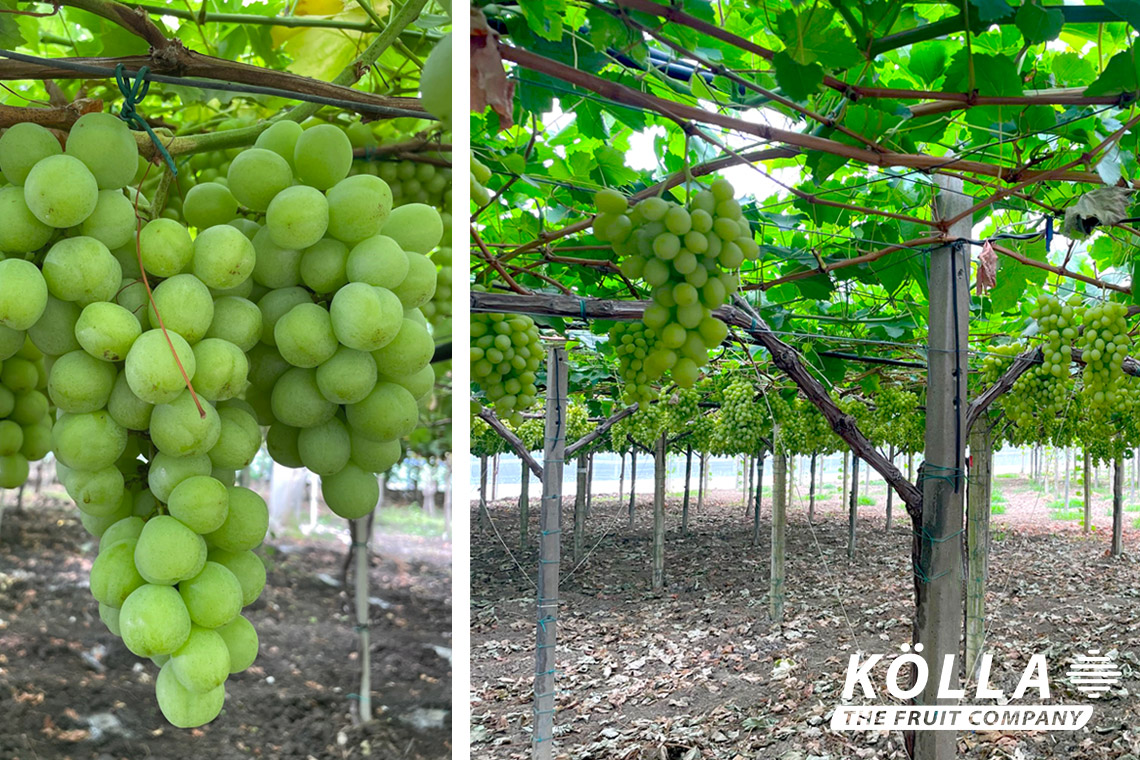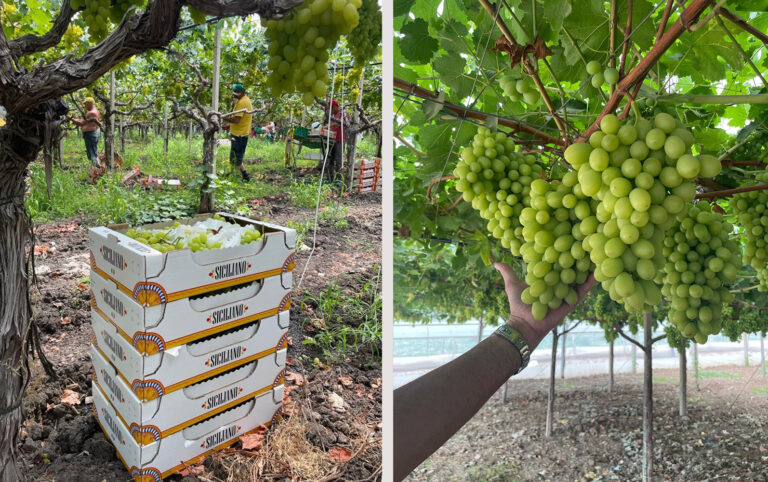This year’s grape season faced challenging and demanding conditions. The southern regions of Europe experienced significant weather fluctuations during the growth phase, making accurate predictions about the season’s outcome difficult. Although the weather situation has stabilized, there is still no relief in sight.
ITALY: Challenges due to increased pesticide use in Apulia
This year’s grape season in Apulia, a significant cultivation area in Italy, began in calendar weeks 27/28. The weather conditions led to considerable impacts on production quantities, resulting in an expected decline of about 30%. Additionally, due to high humidity, there was an increased use of pesticides, leading to a heightened issue of residues this season. It cannot be entirely ruled out that a portion of the production volumes might not meet the required retail specifications and thus not be available in the market.
In addition to weather-related decreases in production per hectare, the shift from seeded to seedless grapes continues to progress. As a result, the combination of reduced cultivation areas and lower production quantities will lead to a more pronounced reduction in the total supply for seeded grapes compared to seedless ones. However, despite the challenging start of the season, the latter will be available in sufficient quantities by mid-season due to newly established cultivation areas.
In terms of quality, there is an initial decline in grape quality compared to the previous year. Weather conditions have influenced both the size of grape clusters and their calibers. However, it should be noted that the impact on late varieties is less severe. Consequently, we expect a steady improvement in quality as the season progresses.
Sicily:
The dryness during the flowering period in Sicily led to a reduced berry development, in contrast to Apulia, resulting in a harvest failure of about 20-30%. Due to these circumstances, the planned start of the Vittoria season in calendar weeks 22/23 was delayed by approximately 2 weeks.
The Vittoria grapes are being harvested with a noticeably greener appearance compared to the previous season and have a Brix value of 15-17°, indicating a good standard quality rather than premium. The same applies to the Black Magic grapes.
Due to anticipated price increases in the field, a purchase of larger quantities of Vittoria variety grapes for stock assurance was observed to counter general scarcity. This has led to a stable high price level for the month of July.
In Sicily as well, the production of seedless grapes is on the rise. Although they currently do not hold a dominating role in the market, this trend is clearly discernible.
SPAIN: Less weather-related impacts than expected
In calendar weeks 26/27, the Spanish regions of Murcia (main region), Alicante, Almeria, Huelva, and Aragón kicked off this year’s grape season. Fortunately, the rainfalls at the end of May and the beginning of June did not have negative effects on grape production. The weather conditions since mid to late June have favored the development of grapes, and we expect a normal harvest in terms of quantity per hectare.
For the initial light seedless varieties, such as the Superior, slightly lower production quantities are expected, although more consistent quantities are foreseeable with the later light varieties. As usual, the first varieties have smaller calibers, which will then be succeeded by newer varieties with larger calibers starting from August. Overall, no quality issues are expected.
A significant development is the continuous introduction of new varieties. Old varieties like Superior, Crimson, and Autumn Royal are losing importance with each season, while new cultivars from the three major groups are increasingly on the rise.
GREECE: Positive outlook at the level of the previous year
In Greece, specifically in Crete, the Peloponnese, and Kavala, the grape season will begin in calendar week 30.
After a rainy spring, followed by increased rainfall in June, the weather situation has normalized in July. Therefore, we expect no major impacts on the grape season. Nevertheless, producers had to take preventive measures to protect production sufficiently. The amounts of plant protection agents had to be increased compared to the previous year, but compliance with the specifications could be sufficiently ensured, with no exceeding of residues anticipated.
Despite weather-related uncertainties, we are highly confident that we can expect a good season with comparable quantities as in the previous year.
July 2023


